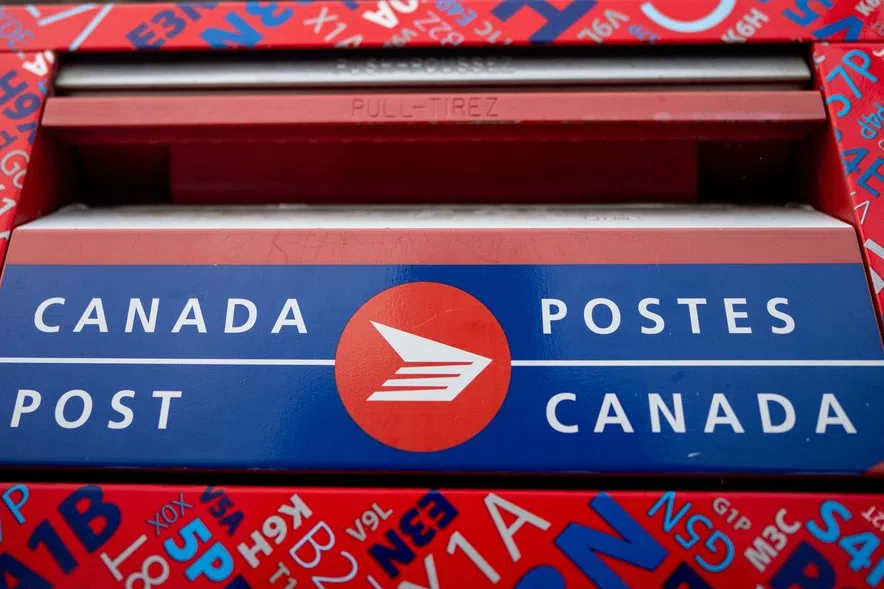by Craig Lord, with files from Christopher Reynolds
OTTAWA — Canada Post and the union representing thousands of its mail carriers took their biggest step toward ending a long saga of collective bargaining Friday, agreeing in principle to a set of new contracts.
In a statement, the Canadian Union of Postal Workers said rotating strike action has been suspended as the two sides work out language in the new contracts. Canada Post agreed to the same terms for any lockout action.
Read more:
- Canada Post says another bailout needed as it continues to bleed cash
- Canada Post expects to lose 30K employees to retirement, voluntary departures by 2035
If both parties can’t come to terms on the language in those deals, a labour disruption could resume, spilling into the busy holiday season.
No details of the agreements in principle — covering the union’s urban bargaining unit and its rural and suburban unit — were shared heading into the weekend.
The union said the two sides agree on the main points of the deal and must now work out tentative agreements for members to vote on.
“This round of bargaining has been a challenging one. But members have stood together for strong public services, good jobs and a sustainable post office,” union president Jan Simpson said in a bulletin to members.
Deal a long time coming
Getting to this point has been a long time coming for both the union and the employer.
Both sides have sparred the last few years over wage hikes and structural changes to the postal service’s workforce, including proposals to introduce more part-time workers and seven-day-a-week delivery.
The deals in principle come on the same day Canada Post reported the steepest quarterly financial loss in its history as the labour dispute ran up against long-standing structural issues in the postal service’s business model.
The postal service has cited declines in letter mail, a shrinking share of the lucrative but competitive parcel market, and strict regulations set by the federal government as factors fuelling its decline.
Postal workers have taken to the picket line on multiple occasions in the bargaining process, including a disruptive strike ahead of the holidays last year.
The federal government asked the Canada Industrial Relations Board to step in to quash that strike, and struck an Industrial Inquiry Commission to determine a path forward.
That probe, led by Commissioner William Kaplan, made a series of recommendations that were later adopted and rolled out in a suite of sweeping changes to Canada Post’s mandate.
The overhaul, announced in September, included allowing Canada Post to expand community mailbox service, shutter some post offices and adjust mail delivery standards.
The Crown corporation submitted a report to Procurement Minister Joël Lightbound earlier this month with a turnaround plan to capitalize on those changes. Details of that proposal won’t be made public while his office is reviewing it.
Ottawa offered Canada Post a $1.03-billion loan earlier this year to help the post office stay afloat, but management signalled in third-quarter results Friday that it will need more support from the federal government to remain financially stable going into next year.
Lightbound has said Canada Post “has become too big for the volume that it needs to deliver” and that without changes, the company would need “repeated bailouts.”
CEO Doug Ettinger said at the company’s annual meeting Tuesday that Canada Post expects to lose up to 30,000 employees — to retirement or voluntary departure — over the next decade as it tries to get costs under control.
Lightbound said he has made clear that service to rural, remote and Indigenous communities must be maintained in the overhaul.
Canada Post said Friday it lost $989 million in the first nine months of 2025 compared with $345 million a year earlier.
The bulk of those losses, it said, came in the second and third quarters, saying they reflect the impact of labour uncertainty on the business amid ongoing rotating strikes by its union.
Read more:











